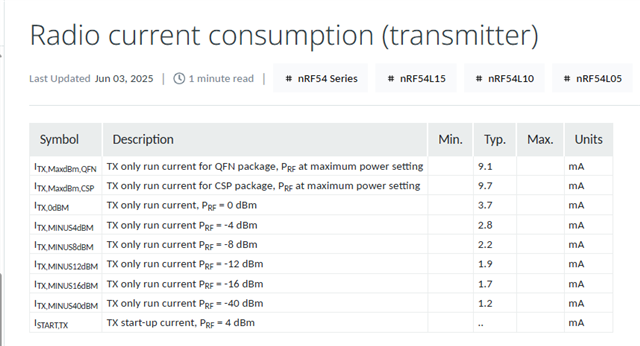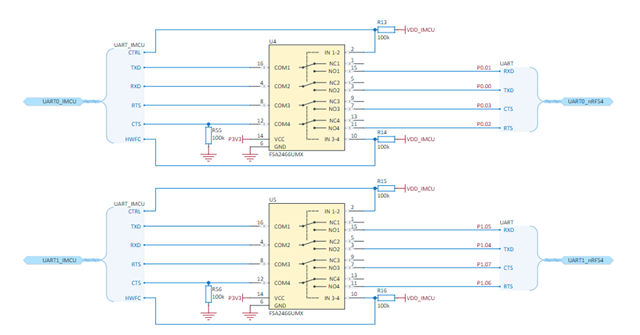Hi,
I am currently developing an nRF54L15 module.
During the evaluation, I measured the Tx current consumption and got a result that was 2mA higher than the value listed in the data sheet.
The current consumption being confirmed is IRADIO_TX2 below.

Under the IRADIO_RX0 conditions, values equivalent to those in the data sheet were measured.
To identify the cause, I modified it with an nRF54l dk and tried to measure at 3.0 V to see if there was a difference.
However, since it was impossible to measure at 3.0 V, I checked at 1.8 V to see if there was a current difference between the evaluation board and the module under development.
There was no difference in the results.
It was about 21mA.
When powered at 1.8V, the current consumption is the same as that of the nRF54L15, so I believe there will be no problems with the module under development.
The conditions for measurement at 1.8V were as follows:
Frequency: 2440MHz
Regulator: DC/DC
Tx Power: 8dBm
Modulation: BLE 1M
Firmware used:radio test sample code
sdk:v2.9.1
Measurements were also taken under the same conditions at 3.0V.
The current consumption of the nRF54ldk was measured using the diagram at the following URL as a reference.
docs.nordicsemi.com/.../measure_ampmeter.html
Please investigate what the problem is.
best regards,
Hiroki





